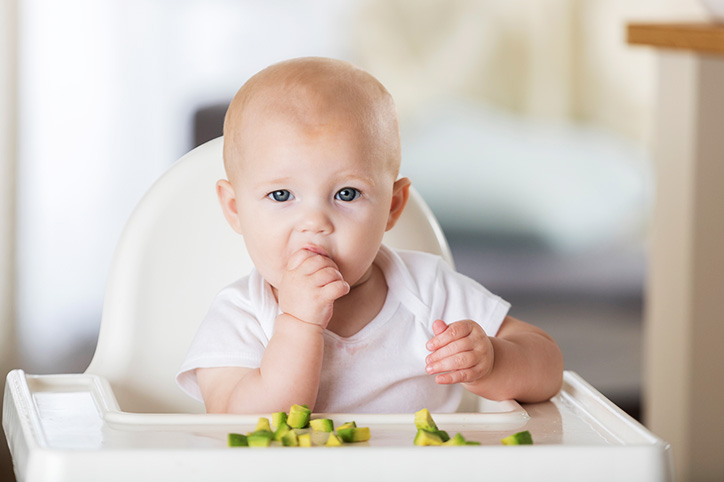At what age is it recommended to start?
Most babies will show signs of being ready for solids around six months. “Readiness signs include being able to sit somewhat independently, good head control, the ability to reach and bring an object to the mouth and interest in watching you eat,” says Best. “There’s no one right way to approach baby-led feeding, but we love bringing babies to the table for parent meals or snacks so they can watch and learn before they even start.”
Sure sounds a lot easier than making purées and spoon-feeding, right?
In terms of the actual execution Best suggests offering three finger food choices and to make sure that’s happening at the table and in the high chair. “For how to cut foods in a safe way, parents can look up any food in our First Foods database. From there, the idea is to let go and try not to interfere too much. Babies were literally born to eat. Our job is to trust their abilities, know that they have built-in reflexes both to help them eat and to protect them from swallowing too-big pieces of food and to empower them so they self-regulate their intake and hopefully enjoy the meal.”
While this all sounds easy in theory, in practice we know it usually isn’t always so.
If you’re having trouble, chase the ‘why.’ “For every problem there’s a root cause,” says Best. “Maybe baby has reflux or developed a negative association with eating due to a bad gag or a caregiver who wiped their face too much in the highchair or maybe baby is not hungry enough. Or overly hungry and needs a breast or bottle feed to fuel-up for the challenge of self-feeding. Or teething! So many different things can lead to frustration or lack of interest at the table. The path forward is usually clear once the ‘why’ is identified,” says Best.
Interested in digging more? Checkout this Troubleshooting page.
More About Baby Food:
- Here’s How To Safely Introduce Babies To Food Allergens
- 7 Easy Slow Cooker Baby Food Recipes
- 11 Delicious Finger Food Recipes Your Toddler Will Love
